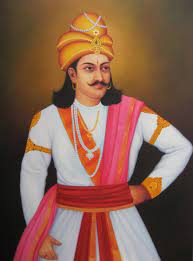Ashoka, often revered as Ashoka the Great, wasn’t your typical historical figure. He transformed from a ruthless conqueror to a compassionate champion of peace and Dharma. His fascinating life and legacy continue to inspire centuries later. Let’s delve into his story:
1. Ashoka Biography:
Ashoka, born around 304 BCE, was the third emperor of the mighty Mauryan Empire, ruling from 268 to 232 BCE. His grandfather, Chandragupta Maurya, laid the foundation of the empire, while his father, Bindusara, consolidated it. Ashoka, however, carved his own path, etched in the annals of history for his remarkable transformation.
2. Ashoka Nationality & Age:
Ashoka was Indian, hailing from the Magadha region (present-day Bihar). When he passed away around 232 BCE, he was approximately 72 years old.
3. Ashoka Education and Schooling:
Little is known about Ashoka’s formal education. However, given his royal lineage, he likely received training in statecraft, warfare, and philosophy. His edicts reflect deep knowledge of Dharma and Buddhist teachings, suggesting a thirst for knowledge beyond practical governance.
4. Ashoka Relationship and Personal Life:
Ashoka had several wives and children. His first wife, Devi, bore him a son, Mahinda, who played a pivotal role in spreading Buddhism to Sri Lanka. Ashoka’s later relationships seem to have been marked by conflicts and intrigues, as depicted in various sources.
5. Ashoka Career Beginnings:
Ashoka’s early career was steeped in conquest. He is believed to have been a ruthless commander, expanding the Mauryan Empire significantly. However, the turning point came with the brutal Kalinga War (262 BCE), which left him deeply disturbed by the bloodshed. This led to his profound conversion to Buddhism.
6. Ashoka Net Worth in 2024:
The concept of “net worth” isn’t directly applicable to historical figures like Ashoka. As emperor, he commanded immense wealth and resources, but attributing a modern monetary value wouldn’t be meaningful.
7. Ashoka Career and Contributions:
After embracing Buddhism, Ashoka transformed into a champion of Dharma. He renounced violence and adopted a policy of “conquest by Dharma,” focusing on good governance, social welfare, and religious tolerance. His reign saw several significant contributions:
- Rock and Pillar Edicts: These inscribed messages, scattered across his vast empire, preached Dharma and Buddhist principles, promoting ethical conduct and compassion.
- Spread of Buddhism: Ashoka sent missionaries throughout Asia, significantly contributing to the expansion of Buddhism beyond India.
- Public Welfare: He initiated various public works projects, including building hospitals, roads, and rest houses, aimed at improving the lives of his subjects.
- Religious Tolerance: Ashoka advocated for respect and peaceful coexistence among different faiths, setting a remarkable example for religious harmony.
8. Ashoka Achievements and Awards:
Ashoka’s achievements are not measured by awards in the traditional sense. His legacy lies in his transformation from a warrior king to a peaceful ruler who championed Dharma and religious tolerance. He left an indelible mark on Indian history and beyond, influencing social thought and practices for centuries to come.
9. Ashoka Social Media Accounts:
Ashoka existed long before the digital age, so he naturally doesn’t have any social media accounts. However, his legacy lives on through various online resources and communities dedicated to studying and celebrating his life and contributions.
10. Conclusion and Legacy:
Ashoka’s story is a testament to the power of transformation. He went from a ruthless conqueror to a compassionate advocate for peace and Dharma. His edicts continue to inspire us today, reminding us of the importance of ethical conduct, religious tolerance, and social welfare. Though centuries have passed, Ashoka’s legacy remains relevant, serving as a guiding light for generations to come.



